The theme of your day
Rebrand poor old Tuesday and design productive weeks with day themes
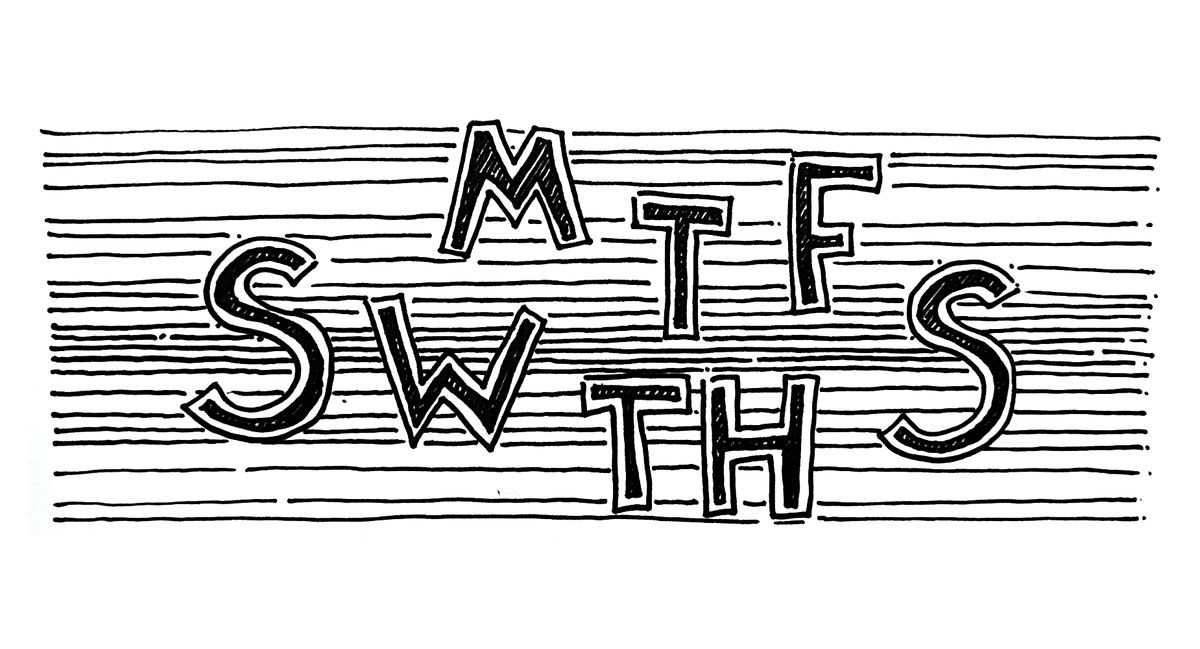
The day. The most basic marker of time passing. It’s a paradox: representing both opportunity (there are so many hours!) and disappointment (where did the hours go?). Each day is a mere blip compared to a lifetime, but: a lifetime is made up of these blips strung together. What you accomplish over time comes down to the average effectiveness of your days; it’s like compound interest. It’s important not to waste them, yet: nor should you despair if every day is not the epitome of productivity. The key is to maintain a good average. If only there was a way... Read on. 👇
The difficulty of consistently getting stuff done on any given day breaks down thusly:
- Choices: Every choice is an invitation to deviate from your goals (assuming you have goals). And choices require mental energy. “Should I go to the gym? I mean, I am kind of tired...” “Should I complete the report that’s nearly done? I mean, I have until Friday to get it done and it’s only Tuesday...”
- Continuity: Most significant achievements, personal or professional, require more than a day to achieve. But the incremental progress within a solitary day can sometimes feel pathetically small compared to the magnitude of the goal (for example: writing a novel).
- Distractions: Whether the mechanism is your calendar, phone or the people you work with, nothing makes a day whither into mediocrity than being interrupted by incessant messages, requests – or shiny things more attractive than the task at hand. This is not the age of information, but the age of distraction.
The good news is that you can take advantage of the way days work – always repeating on a seven-day cycle – to address these challenges. Some days already have an underlying theme. Friday, for example, is celebrated as the day of triumph for those working a standard Mon-Fri working week. “We got to the end!” 🫠 Not all days have such strong branding. Consider poor Tuesday, for instance.
The solution: Give each working day a theme serves your goals over time.
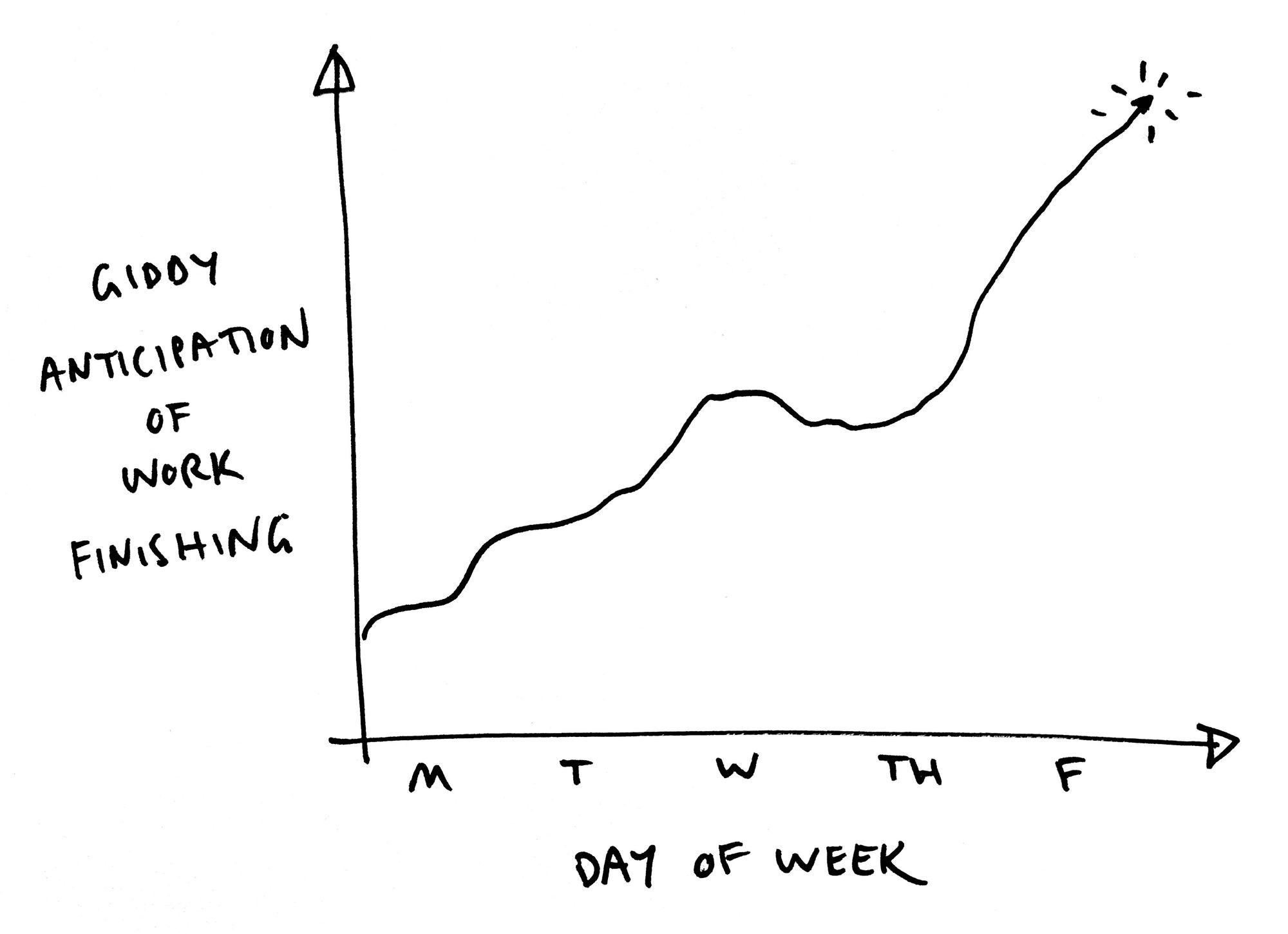
The method
Choose up to five themes
Themes should line up with either:
- A big goal you’re working towards, like writing a textbook or learning how to write JavaScript; or
- A set of recurring small to medium tasks that form part of your regular work
Assigning a day or two a task-set theme (#2) can free up the remaining days for deeper work with fewer distractions. In my day job, I frequently need to review work for other people. Rather than sprinkling these reviews throughout the week, or jumping on review requests the second they come in, I dedicate Tuesdays to be review days.
Affix these themes to your days in the most visible way possible
Use a template to add a theme name, description and emoji for each day. Don’t underestimate the power of a well-selected emoji to make a day theme feel more fun than it might be in reality. Experiment with the text and colour of your themes to achieve just the right vibe.
Next: Export your day themes as an image to display somewhere prominent. You might set it as your computer desktop background, for example.
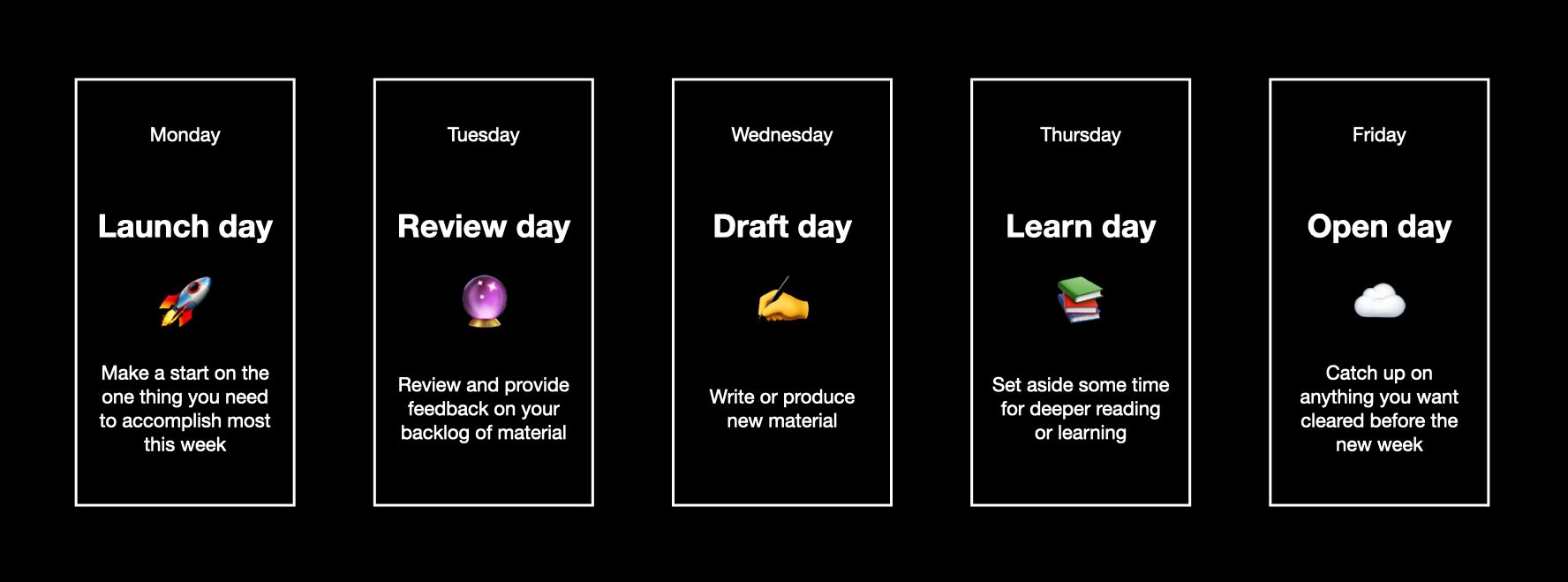
Alternatively, add each day theme to your calendar, for example as an all-day event in Google Calendar. Go nuts with colour coding and emoji, if that helps make it feel more noticeable (dare I say fun?) to you.

Use these themes as a guide, but not in a prescriptive way
The point of a day theme is to give yourself licence to focus on that theme as much as possible. That doesn’t mean you can’t doing anything else that day (although you can be that strict, if you want). That might not be realistic – things come up. But the theme indicates what kind of work ought to be prioritised or happen first, if it comes down to a choice. On Tuesdays, I don’t spend the whole day reviewing, but the reviews that have backed up go down on my daily list for Tuesday.
Your days, defined and somewhat freed
Day themes are essentially a layer that goes over your more granular planning, to ensure that in the longterm (beyond the day or week), you’re consistently giving attention to what you think is important. Coming back to the challenges of getting stuff done each day, here’s how day themes can help:
- Choices: Themes take much of the decision-making out of each day. They represent your pre-made choice of what to focus on.
- Continuity: Magically, days come back around every seven days! Even if you only focus one day a week on a longterm goal, if you’re consistent enough with that one day, you’ll achieve more over time.
- Distractions: Day themes allow you to bundle bitsy work together and get it all done in one hit, on the allotted day – rather than interrupting your flow with small tasks throughout each of the other days.
Good luck!
Use this delightfully colourful slide and image template – and any future template
Paying subscribers can download this delightfully colourful slide and image template, with which you can block out themes for each day, each with a title, description and emoji.
If you’re not a paying subscriber, consider a subscription, which will get you access to all templates for practical posts like this one, and exclusive narrative nonfiction posts.
Thanks!

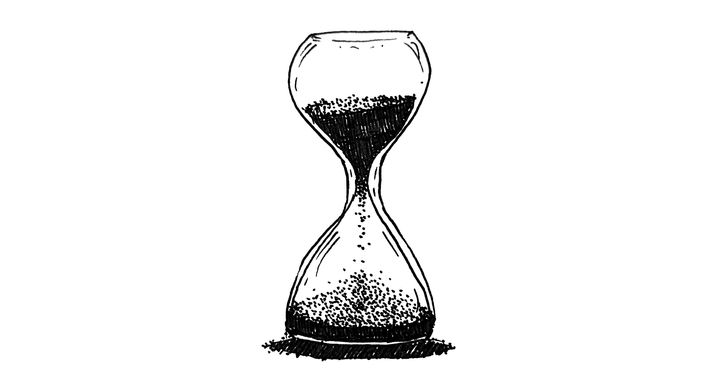
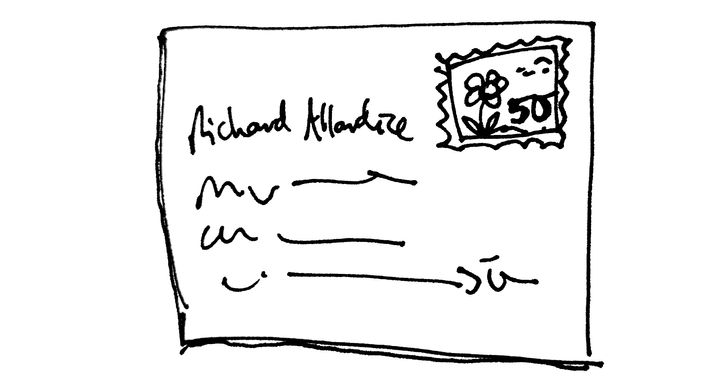
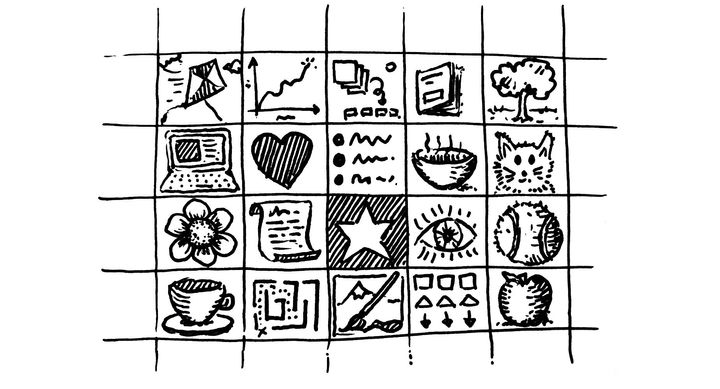
Comments ()